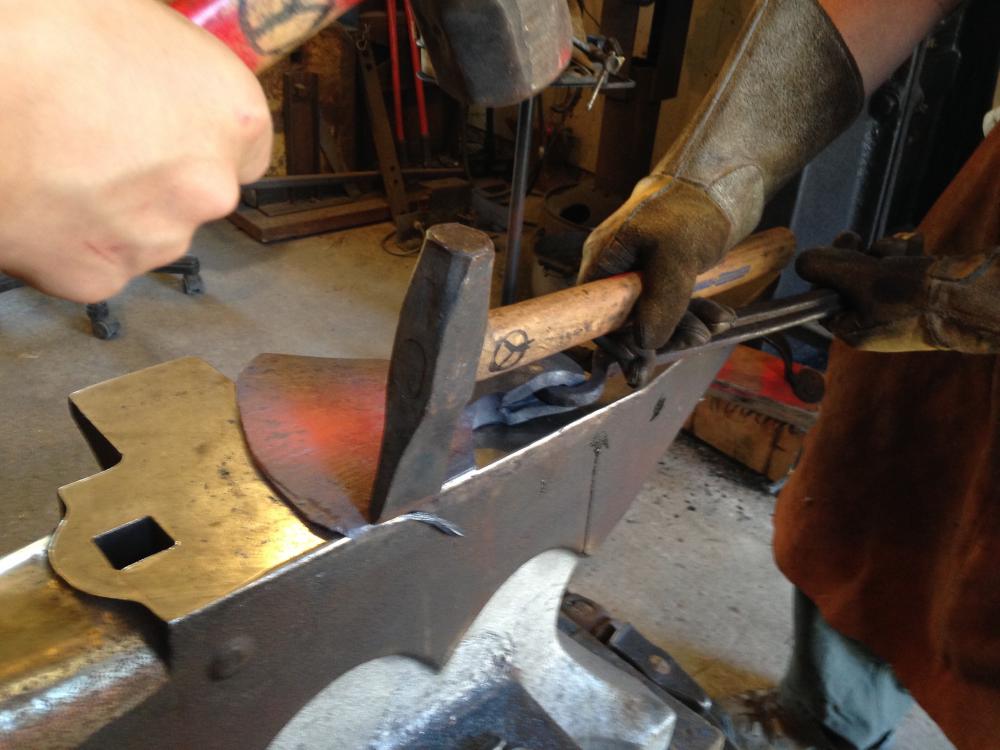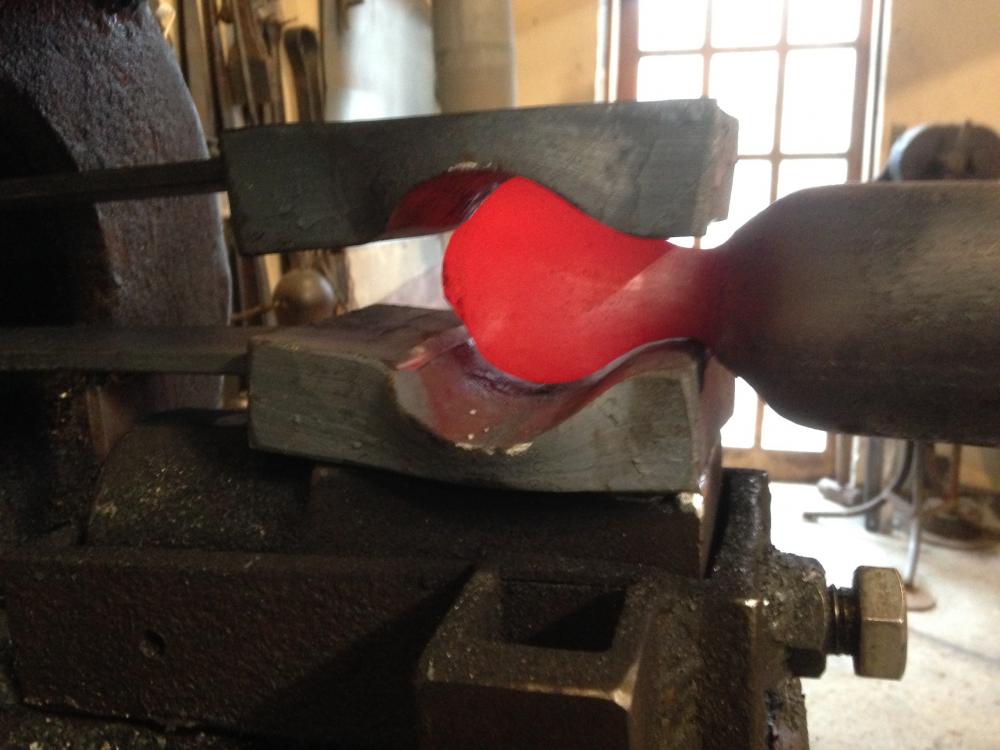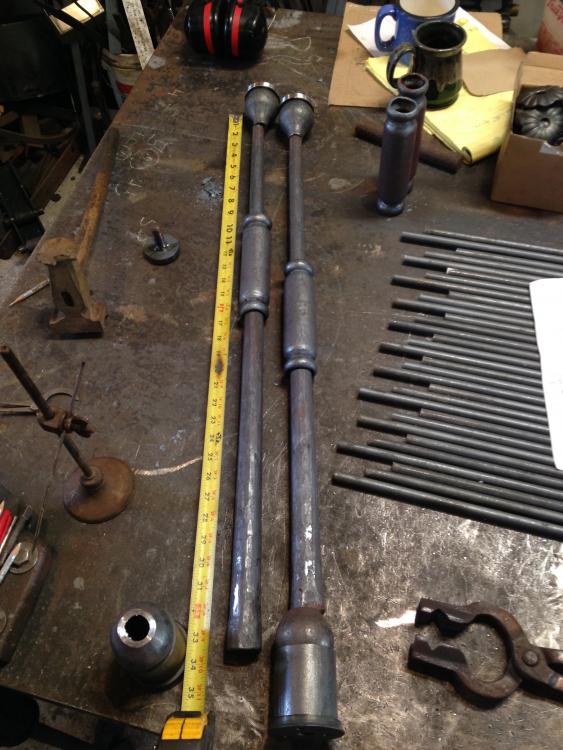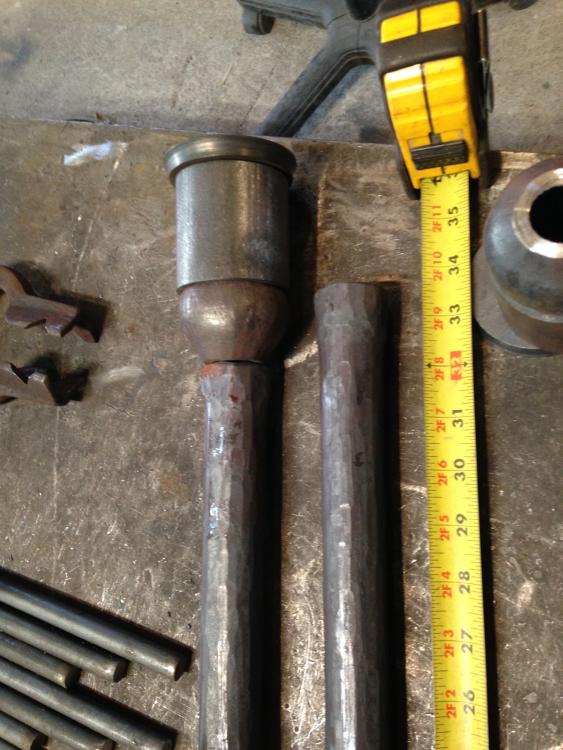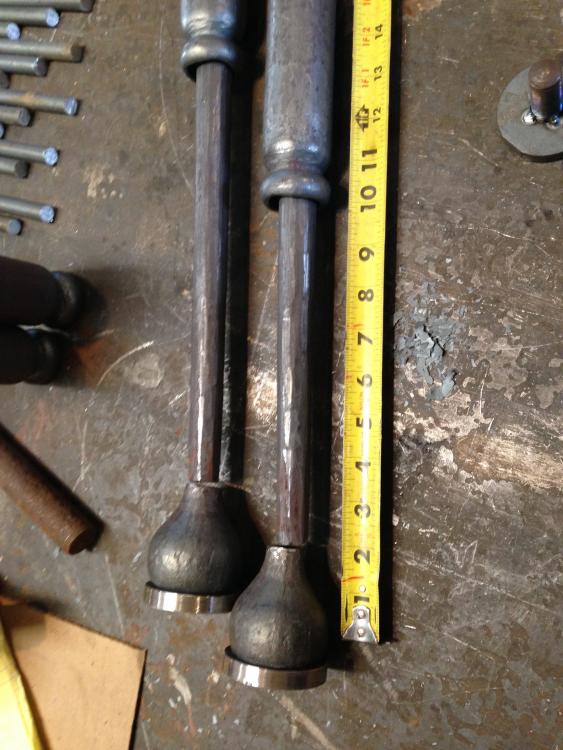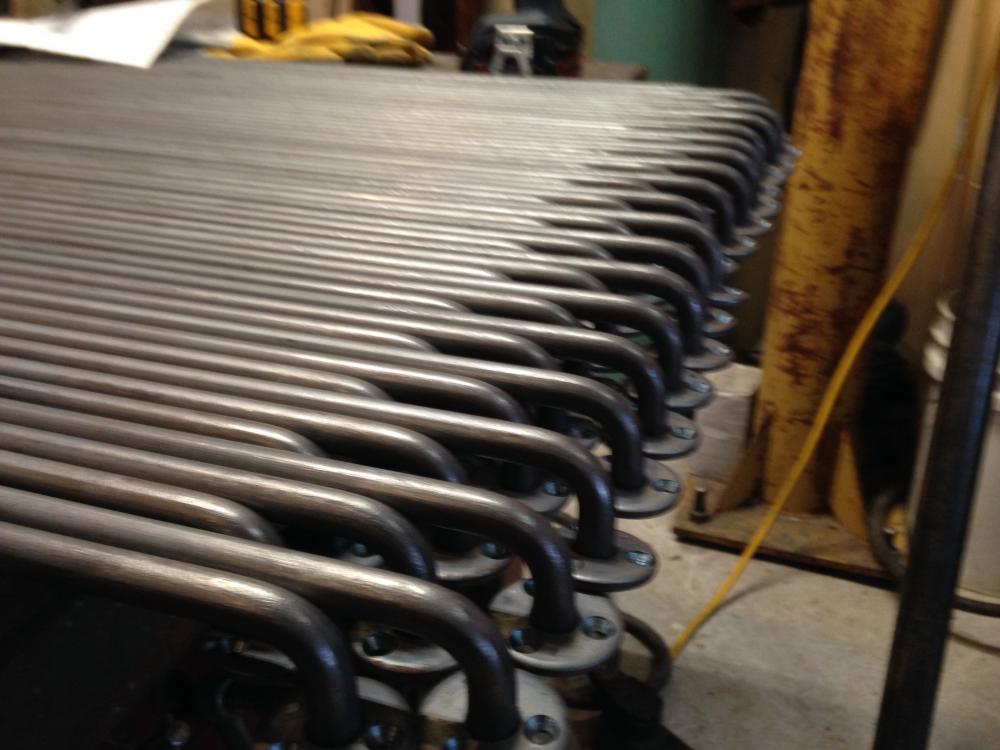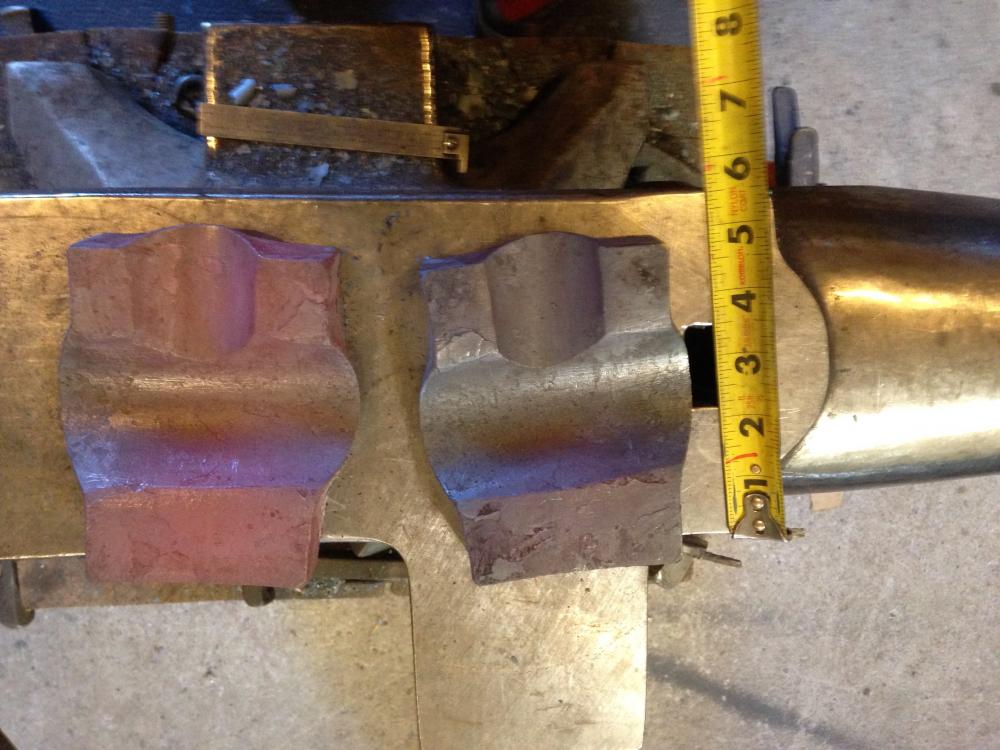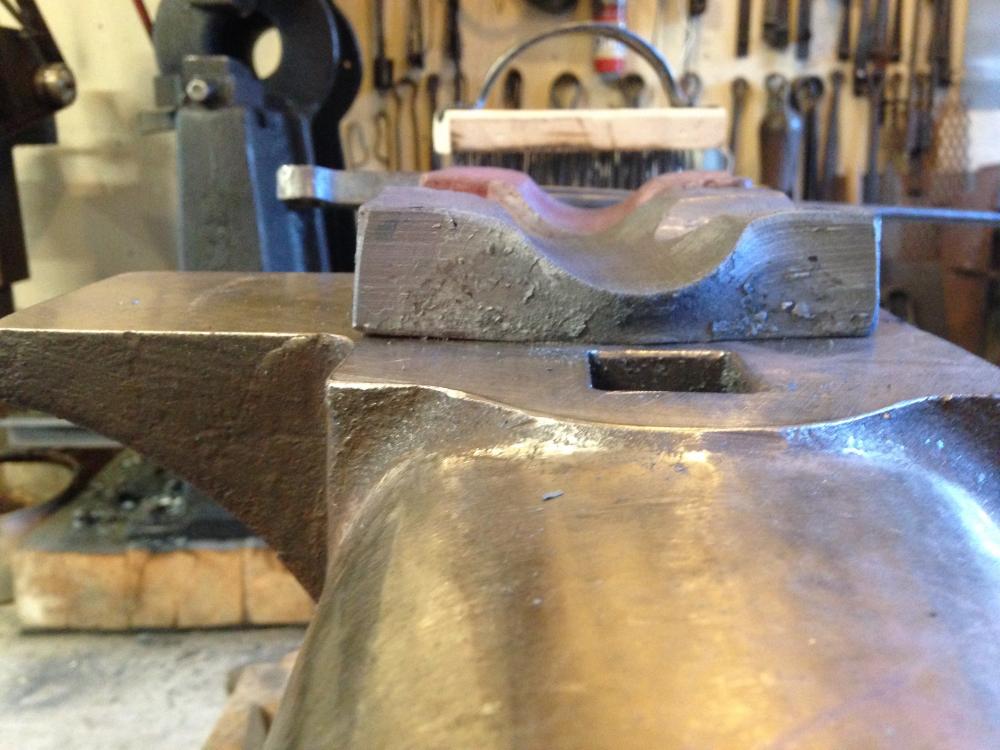-
Posts
1,804 -
Joined
-
Last visited
Content Type
Profiles
Forums
Articles
Gallery
Downloads
Events
Everything posted by Judson Yaggy
-
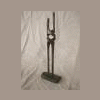
Tooling for Clontz/Spencer tirehammer
Judson Yaggy replied to canada goose's topic in Power Hammers, Treadle Hammers, Olivers
Here is a good place to start. http://www.alaforge.org/files/Tire_Hammer_Tools.pdf -
Fisher vises went up to size #6, which was an 8" wide jaw. The #4 is a 6". They were cast iron with steel bits embedded in the jaws, much the same was as Fisher made anvils. The jaws on the OP's have a different profile than mine do, and along with the coloration that makes me think they have been repaired. Still worth getting, they are great vises!
-
If you really want to drop cycle times, go with an induction forge/furnace. Tim, is this an actual production line and proposed changes and not just a school project? If so please let us know what the final product is so I can avoid driving one. Expecting those kinds of thru-put increases (and asking simplistic questions about same on a non-manufacturing forum) screams "short cut" to me.
-
1/8"r to 1/4"r for that size work.
-
That is a sweet anvil and an even sweeter wife! I'm going to go against the above advise here and recommend putting a small radius on those sharp corners. It's not just wrought iron that hates sharp corners, steel hates a sharp corner too. A perfectly square inside corner will start a crack in steel. An inside corner with a small radius subjected to stress will crack sooner rather than later. A large radius will crack later rather than sooner. The sharper anvil edge will be more likely to peel off or smoosh a sliver of the work piece's shoulder, leading to a cold shut, which is a blacksmith's term for a mechanically caused inclusion and will lead to a stress riser, which will lead to a crack. All of the old blacksmithing text books and most of the new ones cover proper radii for anvils. This is also covered in chapter one of most modern high tech closed die forging texts. Every professional modern ornamental smith's anvil I've ever seen has a variety of radii on their anvils, and on power hammer dies, and on swages, fullers, power hammer tools, etc etc. Mildly rounded corners also help protect the anvil from chipping if (when) you miss a blow. They also give a clean, finished appearance to your work, not that chopped up look you get from repeatedly trying to set a shoulder on a sharp edge. You can read between the lines of the general guidelines and figure out what radius works for the size of work you do and the size of shoulder you put into you work pieces. As to one or both sides I find that in architectural metalwork there are a lot of double shoulders in the same piece so it is more efficient to have the same radius on both sides of the anvil. YMMV. Drop me a PM sometime for directions and come on down to my shop, I'll show you the radii I ground onto my also purchased new anvil.
-
Are we not supposed to post links to Youtube anymore? I see the link 2 posts up has been removed. Steel hates a sharp corner. A perfectly square inside corner will start a crack. An inside corner with a small radius subjected to stress will crack sooner rather than later. A large radius will crack later rather than sooner. The sharper anvil edge will be more likely to peel off or smoosh a sliver of the work piece's shoulder, leading to a cold shut, which is a blacksmith's term for a mechanically caused inclusion and will lead to a stress riser, which will lead to a crack. All of the old blacksmithing text books and most of the new ones cover proper radiuses for anvils. This is also covered in chapter one of most modern high tech closed die forging texts. You can read between the lines of the general guidelines and figure out what radius works for the size of work you do and the size of shoulder you put into you work pieces. As to one or both sides I find that in architectural metalwork there are a lot of double shoulders in the same piece so it is more efficient to have the same radius on both sides of the anvil. YMMV.
-

My idea for a power hammer...
Judson Yaggy replied to Bamaboy13's topic in Power Hammers, Treadle Hammers, Olivers
Your anvil idea is still going in the wrong direction. Even pouring a bunch of lead into the mess, you still won't have a solid enough mass. Just buy a length of 6 or 8" round solid, or if budget is a concern start scrounging. Some people make good anvils by sandwiching a bunch of 1" plates (on end) and plug welding/edge welding the stack together. -

Chinese Hammers
Judson Yaggy replied to brianstucker's topic in Power Hammers, Treadle Hammers, Olivers
well covered here, start reading! -
You don't need to be a member to go, but it's worth signing up, you get a great newsletter, discounts on NEB castings, access to member only workshops, and much more. You can buy a membership at the door. I'll be there, say hi if you spot me!
-

What did you do in the shop today?
Judson Yaggy replied to Mark Ling's topic in Blacksmithing, General Discussion
Roughing out newell post parts today. 2 1/2" od pipe for the hollow bits, 1 3/4 solid tapered over 34 inches. Fun. -

Advice help on a chandelier
Judson Yaggy replied to Gergely's topic in Blacksmithing, General Discussion
Yes, sorry I should have been more clear. RG expressed my intent better than I did myself. I would put words to that affect into the bid document/purchase agreement/informal email that includes price. -
I've always wanted to find one of the bigger (100lbs+/-) ones and drill some holes thru the body an inch or two under the face and connect the dots with my portaband to make a female dovetail, then wedge in some nice power hammer dies. Poor man's cutler's anvil!
-

Bolting down tire hammer?
Judson Yaggy replied to setlab's topic in Power Hammers, Treadle Hammers, Olivers
What size of hammer? For a 25# LG or similar cheap low grade allthread from the local hardware store with epoxy will be fine as long as your embedment is good, get into bigger hammers increase the size and grade till you are casting BIG bolts in place in many thousand pound concrete inertia blocks. -

Advice help on a chandelier
Judson Yaggy replied to Gergely's topic in Blacksmithing, General Discussion
"Structural engineering and installation not included." Are you an engineer or a carpenter and insured as such? -

Advice help on a chandelier
Judson Yaggy replied to Gergely's topic in Blacksmithing, General Discussion
If you did you'd be REALLY good at leaves when you were done. 10 per hour for 10 hours and it would only take you 10 days. -

What did you do in the shop today?
Judson Yaggy replied to Mark Ling's topic in Blacksmithing, General Discussion
How about in the shop this week rather than just today? 1,000 holes, 750 countersinks, 250 bends, 250 welds on stair balusters then some heavy forging of 1 1/2" by 4" for some big clapper dies for the newell posts. This is just one of the batches. -

can we agree to disagree?
Judson Yaggy replied to SReynolds's topic in Blacksmithing, General Discussion
Therein lies the problem. Either you don't understand that publishing does not necessarily equal total expertise (thou it often does) or you do understand and are trying to troll folks into beating up on books for beginners. And when you get really deep into a field of study "publishing" just means that you are defending a hypothesis with empirical data and are asking for peer review. The authors of and target audience for "popular" smithing books, as well as the technical editors for same, don't really have time or inclination to explain how solution x at y temp with z agitation will harden a,b,or c alloy. They are just letting you know that there are a LOT of variables and you should go do your own research. Which many of the other posts in this thread show folks here have done admirably. Do your research, check your sources, and check your sources' sources. -

Mathematics in blacksmithing
Judson Yaggy replied to Ferrous Beuler's topic in Blacksmithing, General Discussion
A great many math problems in the smithing world can be solved using graphical layout, no arithmetic or numbers needed. Dividers, ruler/scale, compass, string, plumb bob, drawing implements, understanding of geometry. Just a suggestion for a different but entirely valid approach to problem solving. -
I think he's taking this thread for granite. No schist jokes, this is a family friendly forum. Vermont has nice river and lake user laws, up to the high water mark is state controlled and open to all but game wardens and state troopers are usually on the ball enough to take care of abuses. It's considered good form to ask permission from the landowner to cross the dry land to get to the river.
-

Looking for advice... Trenton Anvil
Judson Yaggy replied to Sargos's topic in Anvils, Swage Blocks, and Mandrels
JHCC- never heard an exact number, but figure 4" by 4" by 6" +/-, multiply by .25 (rough estimate for iron type material weight per cubic inch) and you get 'round 25 pounds. YMMV. -

Looking for advice... Trenton Anvil
Judson Yaggy replied to Sargos's topic in Anvils, Swage Blocks, and Mandrels
NEB sells several different castings at cost to our membership, photos and prices can be seen on our website under the "membership" section. But I think Dale is correct, the upsetting block isn't on there. Contact Bob Menard for details. We are a non-profit educational organization and provide the castings as a benefit to our membership. Non-members can buy the castings for an additional $25 which just happens to be the price of membership! Shipping gets expensive for castings but we sometimes do bulk shipping for larger orders, Bob just sent a pallet of fire pots to the California Blacksmith's org. -
I went looking. Don't think we can call either Vermont or Georgia the "granite capital of the world" http://www.litosonline.com/en/articles/en/558/production-granite-world-2014-estimates
-
Remember, don't grind your rock or the granite anvil purists will get upset. You could take years off the life of your rock...(grin) Also, most rocks thru history didn't look like a London pattern rock, you can do perfectly good work on a rock that doesn't look like a "rock" (bigger grin)
-
Not that old for an anvil by the SN. Jeez, come on, we need more to work with.
-
I have donated a few times in the past but recently when discussions like this have come up I haven't found an easy way to send a few bucks. Is there still a donate button somewhere that I am missing?

